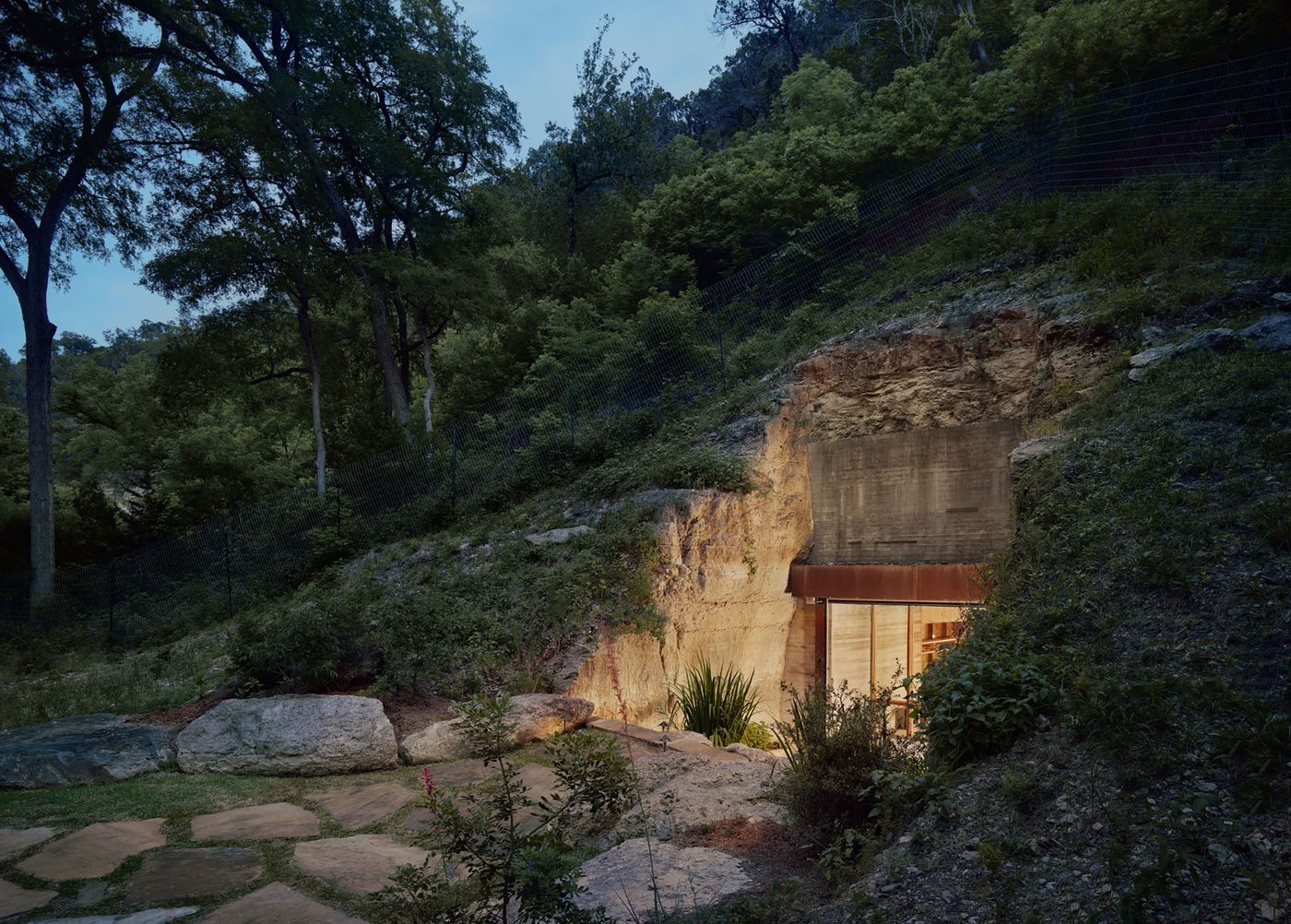
Clayton Korte Transform an Excavated Cave in Texas into an Elegant Wine Cellar
Words by Yatzer
Location
Texas, United States
Clayton Korte Transform an Excavated Cave in Texas into an Elegant Wine Cellar
Words by Yatzer
Texas, United States
Texas, United States
Location
Embedded into a forested hillside in Texas Hill Country known for its scenic expanse of rolling hills, grasslands, spring-fed rivers and lakes located in central Texas, this extraordinary private wine cellar by Austin and San Antonio-based architects Clayton Korte takes wine tasting to another level. Located off a secluded river bend amongst oak and elm trees, a short walk from the owners’ ranch, the cellar was conceived as a “non-building”, hidden in an existing excavated cave which the team has transformed into a welcoming space of contemporary sophistication albeit without effacing the raw, primal ambience of the cavernous setting.

Photography by Casey Dunn.

Photography by Casey Dunn.
Camouflaged by large limestone boulders that were collected from the excavation and lush vegetation, the cave’s entry disappears into the landscape further imbuing the space with a mystical ambience.
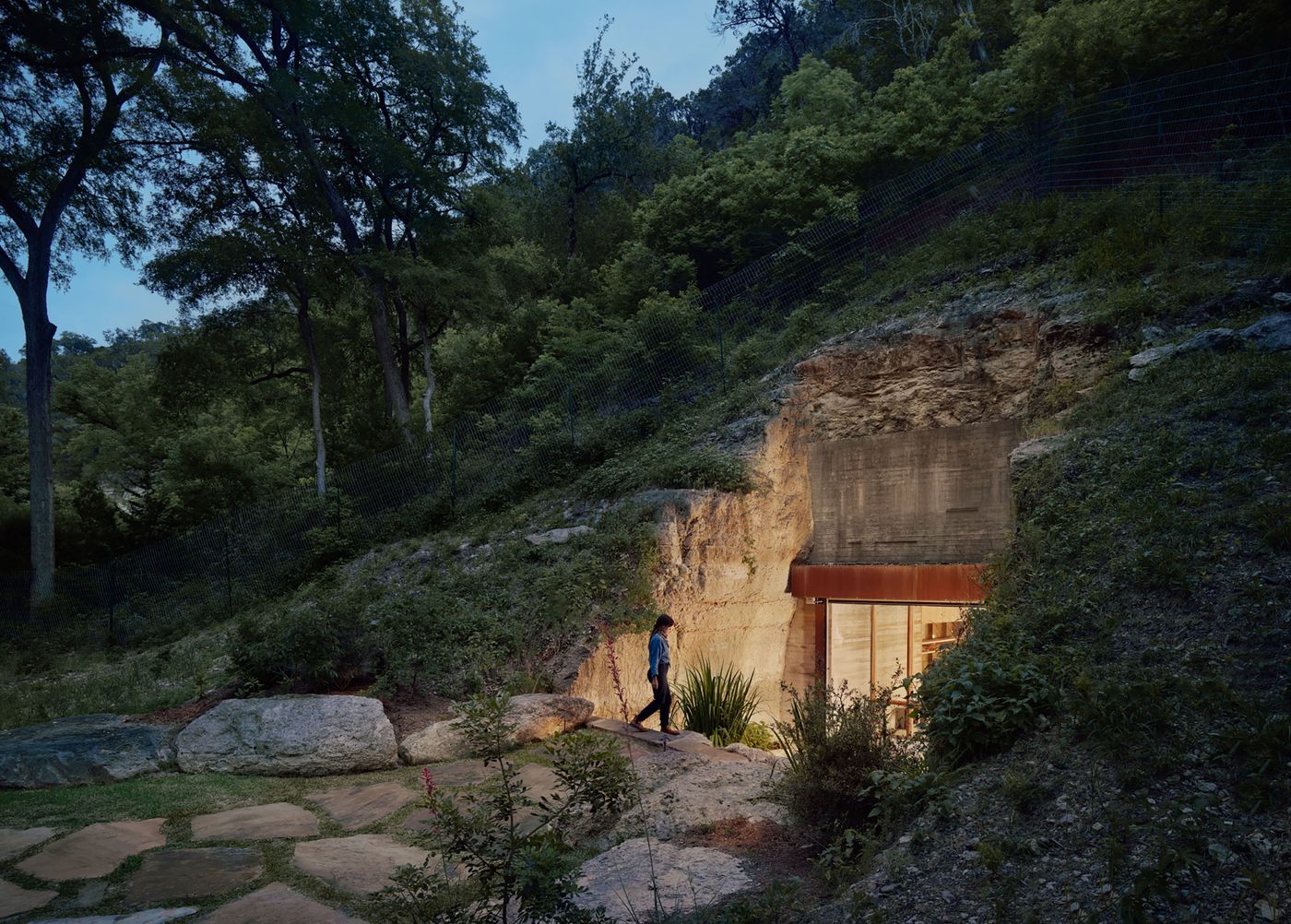
Photography by Casey Dunn.
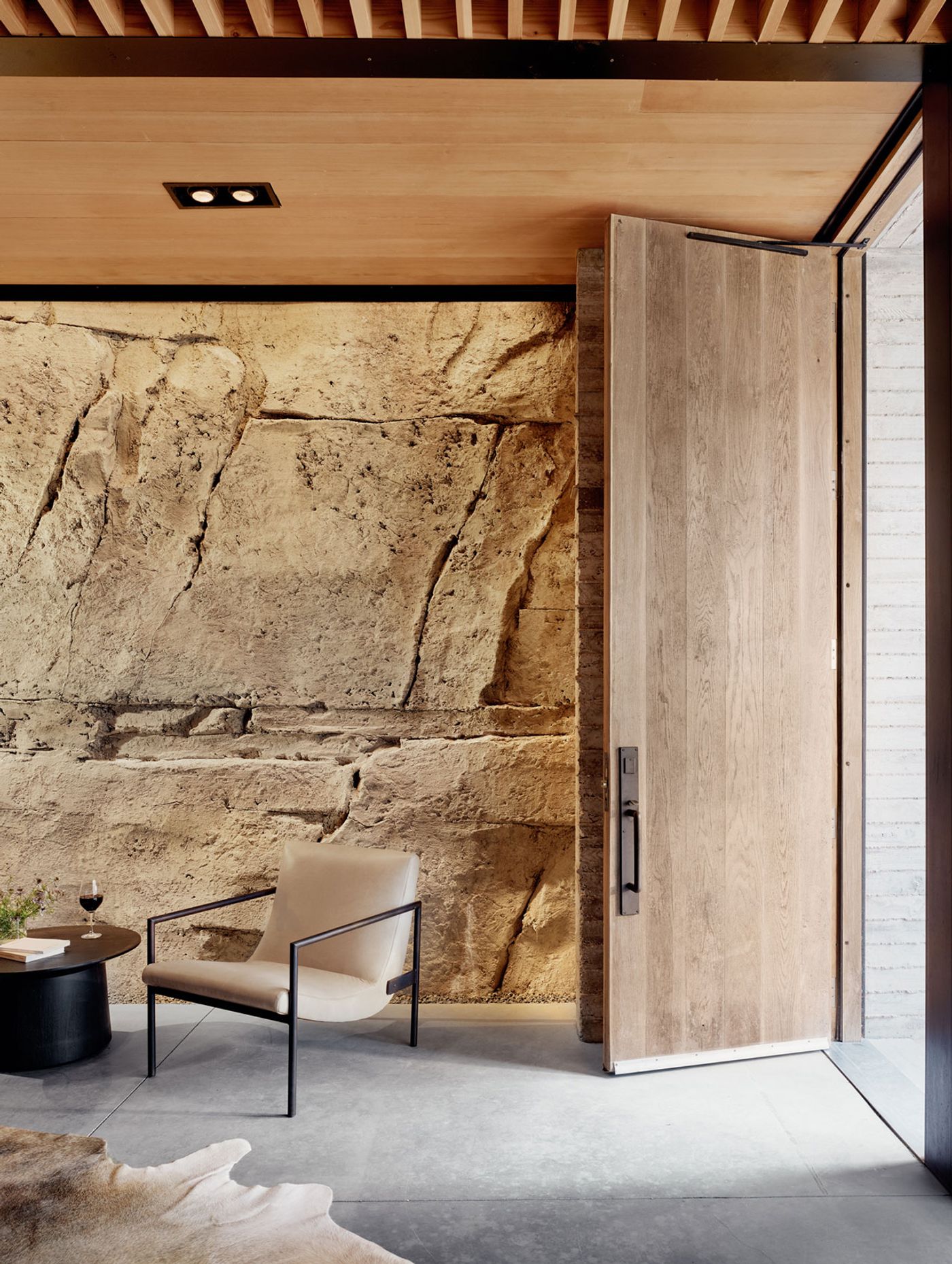
Photography by Casey Dunn.

Photography by Casey Dunn.
Building inside an excavated cave posed several challenges, from dimensional constraints to a lack of water tightness, which the team responded to by building a concrete bulkhead-cum-threshold at the entrance and inserting a wooden volume inside the void. While the former restrains the loose limestone at the cave’s mouth and provides a transition between the natural landscape and the elegant, streamlined interior, the latter introduces a human-scale element into the cavernous space and strikes a balance between the manmade and the natural. Detached from the cave’s surfaces, the wooden structure features “windows” that reveal the softly illuminated limestone formations behind it, allowing visitors to catch glimpses of the tunnel-like cavern the space occupies."By carefully manipulating the solids and voids of a ‘wooden-box’ insert”, Clayton Korte principal Brian Korte explains, “the cave could be concealed and revealed to the occupant, leveraging the good qualities of subterranean construction while protecting from unwanted moisture and darkness”. Intentionally placed away from the cave walls, the wooden structure can also be easily adapted or disassembled.
Separated into an entertainment lounge at the front and a barrel-vaulted cellar, which also doubles as a tasting room in the back, the interiors of the Wine Cave embrace a contemporary aesthetic of elegant minimalism exemplified by the smooth concrete floors, trimmed wooden joinery and cabinetry, and stark furniture pieces. Locally sourced, durable and easy to maintain material such as Douglas Fir and White Oak, the latter ebonized and in its natural shade, imbue the space with soft, warm textures that stand out against the rugged concrete and stone surfaces, as do the reclaimed cedar blocks which were milled for both the countertop surfaces for the tasting bar and the floating restroom vanity adding more timber accents. Soft, indirect illumination further enhances the project’s effortless sophistication and elevated ambience, while an ever-expanding private collection of around 4,000 bottles means that both wine-aficionados and design-lovers are sure to feel at home.
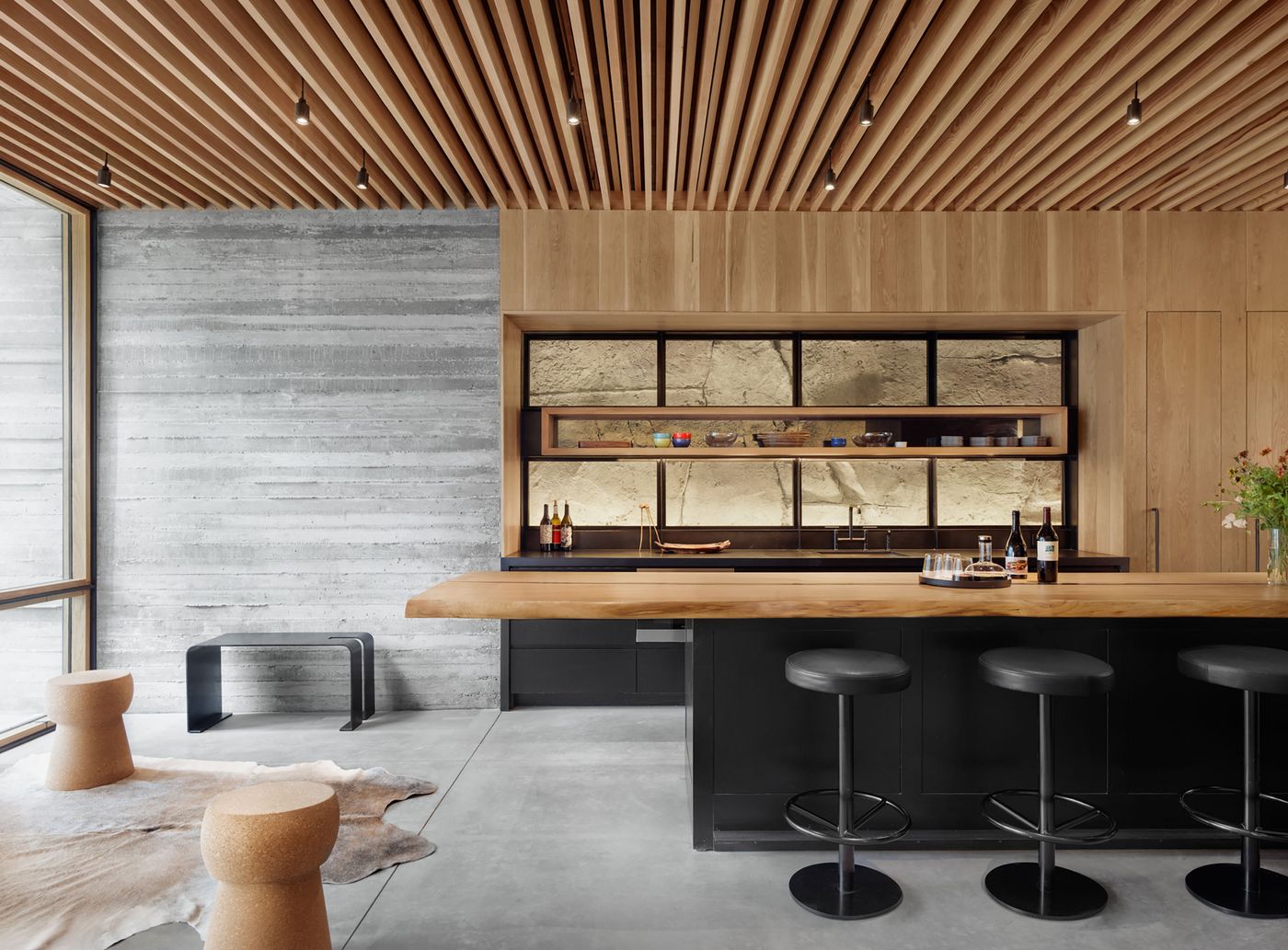
Photography by Casey Dunn.

Photography by Casey Dunn.

Photography by Casey Dunn.
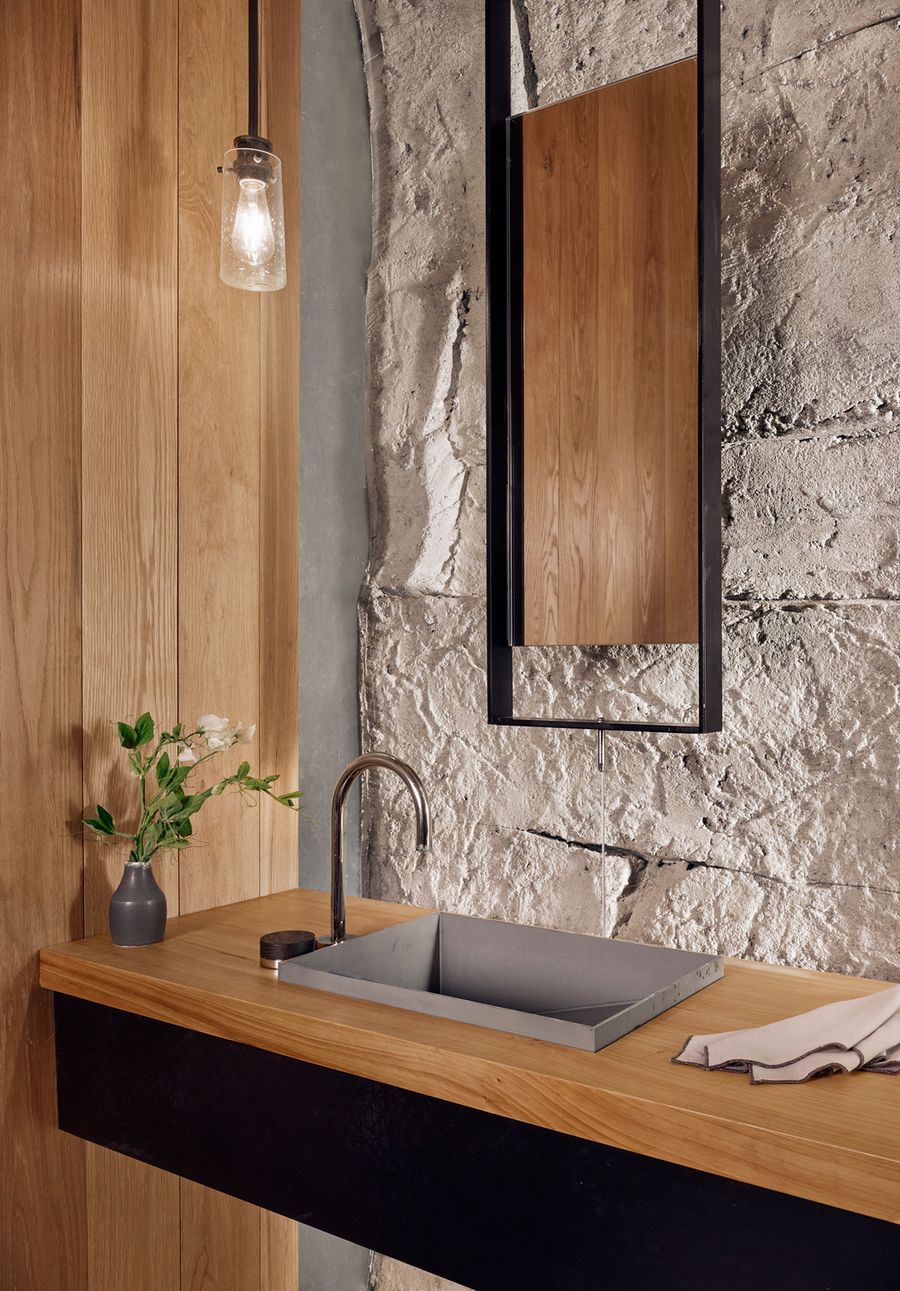
Photography by Casey Dunn.
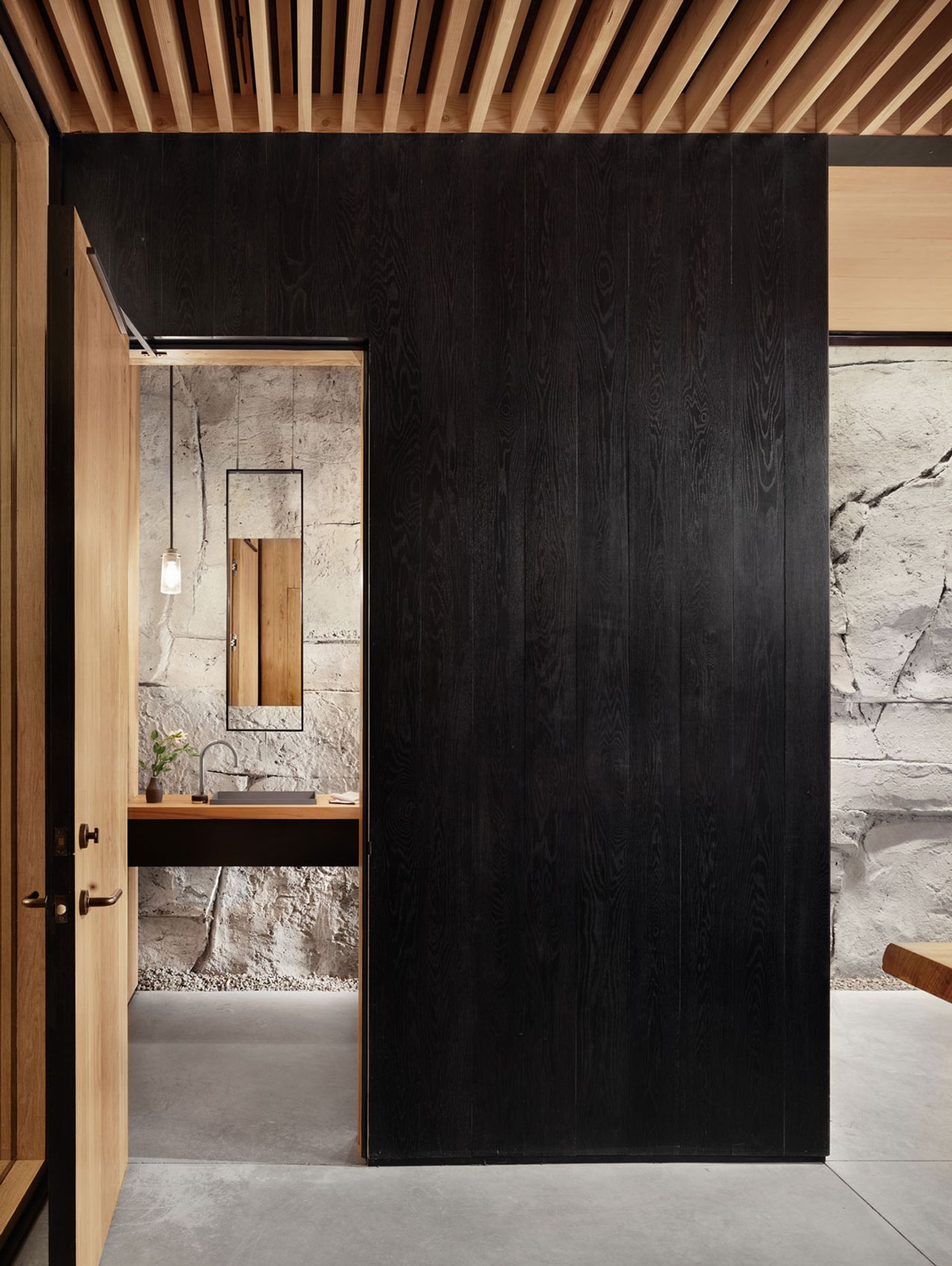
Photography by Casey Dunn.
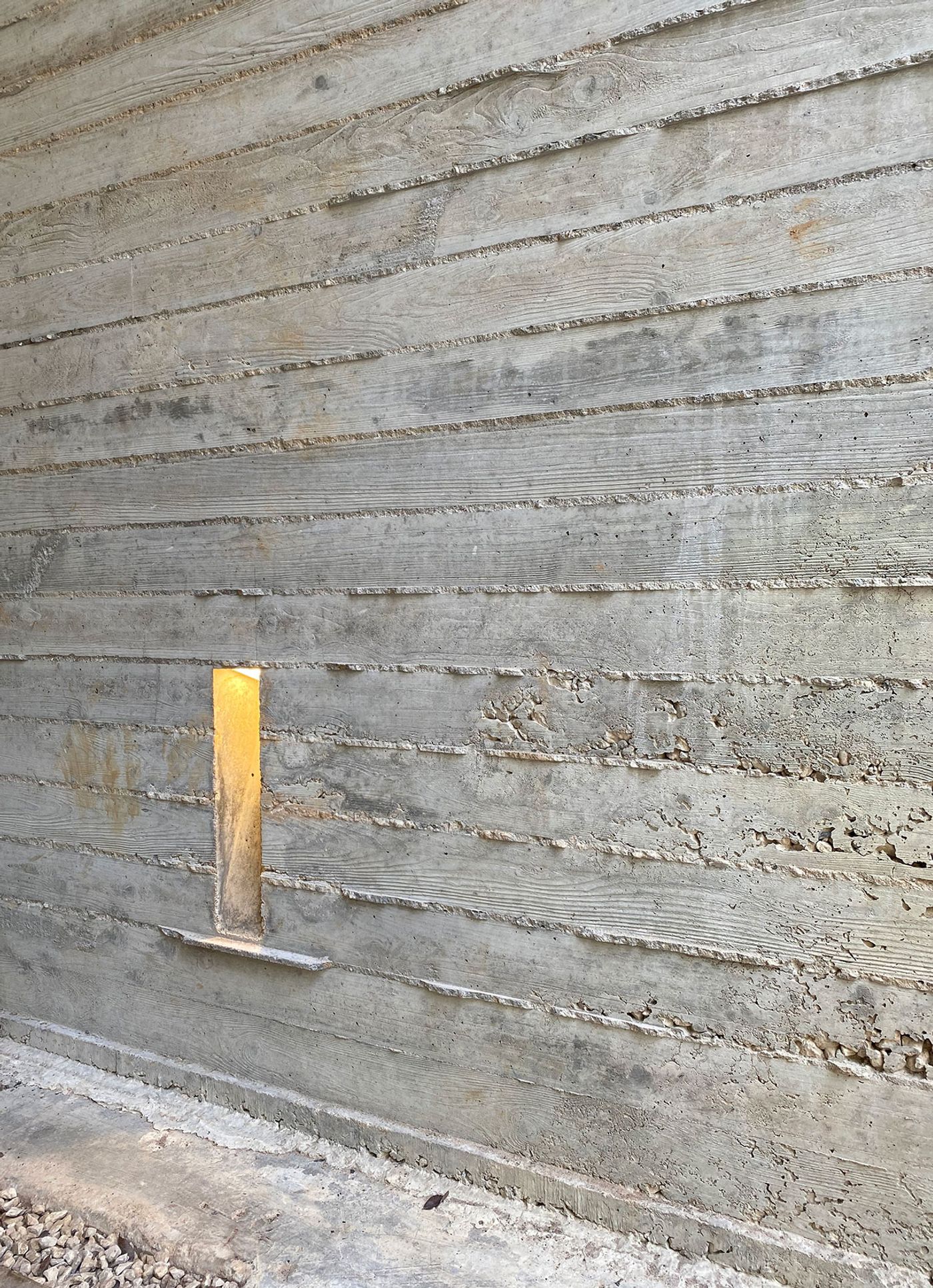
Photography by Casey Dunn.